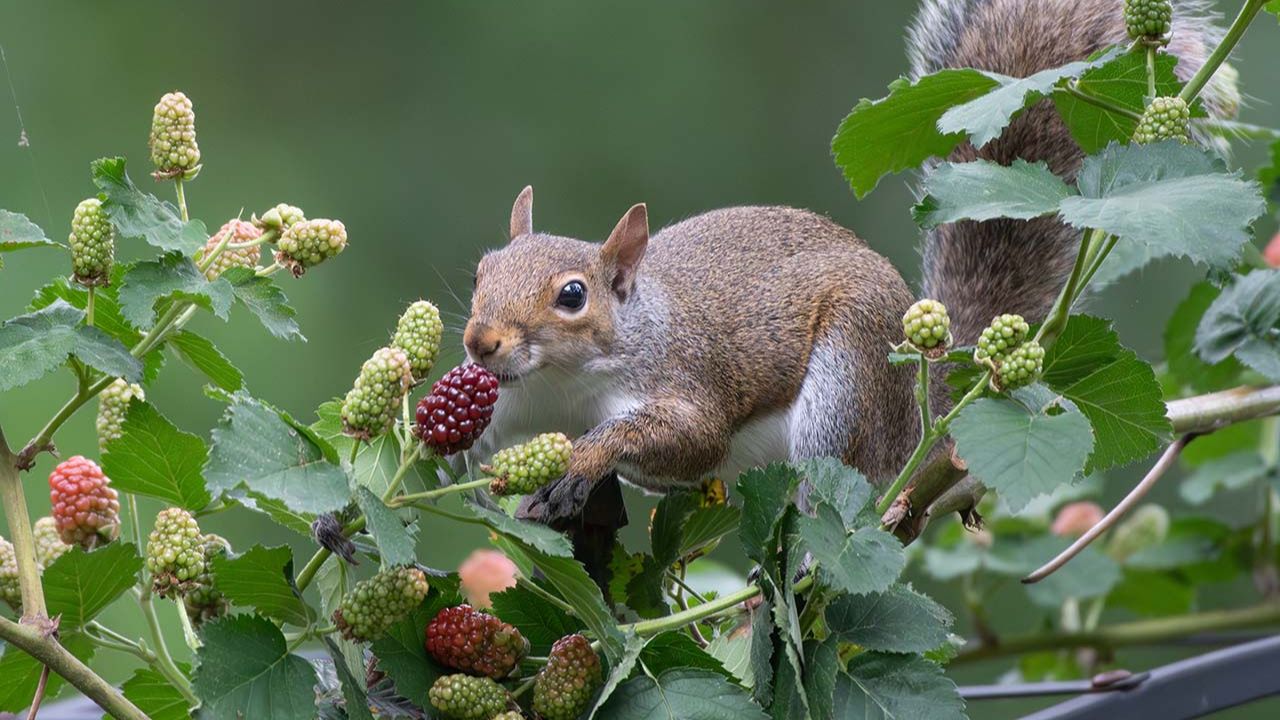
Angelica Uses and Plant Monograph
Angelica archangelica is a striking member of the Apiaceae family that can be cultivated as an elegant ornamental and a medicinal plant. It is a lovely addition to the garden, having attractive and edible foliage in its first year of growth. A biennial, it blooms in its second year of growth; few plants rival the excitement elicited in observing the swollen globose, budding flowers emerging from iridescent, pinkish-white and green-hued, sheathing leaves that eventually bare light green, majestic compound umbels.
The thrill continues when the impressive large green flowers bloom and are a buzz with insect activity. The flowers are rich in nectar and pollen: attracting and nourishing numerous pollinators including butterflies, moths, bees, and wasps. The flowers also exude a musky aroma that attracts carryon insects such as flies and beetles. As many as nine to ten different types of insects can be present on one flowering head of angelica. Plus, birds consume its mature seed heads.
Aside from its many virtues in the garden, angelica is an impressive medicinal plant. It enhances digestion, improves circulation and cardiovascular function, supports immune and respiratory health, eases smooth muscles spasms, and decreases joint pain. Now, let’s dive into these medicinal uses of angelica…

Angelica Uses & Plant Profile Summary
- Botanical Name: Angelica archangelica (syn. Angelica officinalis and Archangelica officinalis)
- Other Common Names: Angelica, garden angelica, Norwegian angelica, archangel, root of the holy ghost, goutweed, bellyache root, sea watch, masterwort, wild celery
- Family: Apiaceae (Umbelliferae)
- Parts Used: Roots, rhizomes, and seeds
- Energetics: Hot and mildly drying
- Taste: Bitter, sweet, and pungent
- Plant Properties: Antibacterial, antispasmodic, aromatic, bitter, carminative, choleretic, cholagogue, circulatory stimulant, diaphoretic, diuretic, expectorant, emmenagogue
- Plant Uses: Digestive, bronchiole, and uterine cramps; dry cough and respiratory congestion; first stages of a cold; fever and chills; poor circulation; mildly elevated blood pressure; arthritis, bruises, strained muscles, and neuralgia (topically)
- Plant Preparations: Tea, infused honey, syrup, tincture, glycerite, pastille, poultice, fomentation, salve, food
Angelica Root for Optimal Digestion
Angelica is an aromatic digestive bitter tonic, choleretic, cholagogue, carminative, and sialagogue.1,2,3 This means it stimulates secretions in the mouth, stomach, and gallbladder, which enhances digestion and assimilation.4 The root increases circulation in the digestive tract. It aids in treating gas, bloating, nonulcer dyspepsia, and indigestion.5,6,7 Add a small quantity of angelica tincture (5–15 drops per dose) to digestive bitter formulas and consume 15–30 minutes before meals as an aromatic digestive aid.
Angelica Root for Digestive & Menstrual Cramping
Angelica root exerts smooth muscle antispasmodic effects, reducing stomach, intestinal, and menstrual cramping.8,9,10,11 It is effective for treating digestive cramps resulting from gastrointestinal microbes, poor food combining, or ingestion of inadequately cooked beans or grains.12 Angelica is a highly effective antispasmodic for slow-starting, crampy menses.13 The constituent angelicin relaxes smooth muscles, while the coumarin-based compounds in angelica are calcium channel blockers.14,15 Calcium channel blockers (also known as calcium antagonists) are substances (pharmaceuticals or herbs) that prevent calcium from entering the heart muscle and arteries; they aid in treating high blood pressure by relaxing and dilating blood vessels. They can also aid in treating cardiac arrhythmia (irregular heart beat), angina (chest pain), and Raynaud’s disease (a blood vessel condition). (Note: Consult your medical practitioner if you have or are already medicated for the conditions.)
Angelica is especially efficacious when the skin above the reproductive region feels cold to the touch, when someone feels chilled, has cold extremities, and/or when they experience intestinal cramping with menstrual cramps. It aids in treating menstrual cramps that improve following topical heat applications. Angelica warms the womb and reduces blood stagnation in the reproductive organs. It acts as an emmenagogue and encourages shedding of the uterine lining.16,17,18 Consume 8 ounces of hot decocted tea, or 20–60 drops of tincture in hot water, every two hours (up to four times daily) to obtain optimal antispasmodic and emmenagogue properties.

Angelica Root After Labor
Midwives administer the herb to hasten detachment of the placenta following labor when the usual methods of standing, massaging downward over the uterus, or gently tugging on the umbilical cord are not effective. It often works in five to ten minutes. Angelica is highly effective in this circumstance, especially considering that someone can go into shock if the placenta is not delivered within 30 minutes following delivery.
Angelica Root for Respiratory Conditions
Angelica root is an aromatic expectorant and antitussive.19,20 It is most effective for treating respiratory conditions with clear, white, or cloudy mucus that indicate an infection with a cold nature. It aids in treating hoarseness, tracheitis, laryngitis, colds, a dry hacking cough, whooping cough (pertussis), bronchitis, asthma, and wheezing.21,22,23 Combine with Aralia californica, gumweed (Grindelia), anise (Pimpinella), elecampane (Inula), Senega snakeroot (Polygala), and licorice (Glycyrrhiza) to alleviate respiratory spasms and breathing difficulties.
Angelica Root for Immune Support
Angelica is useful as an immune stimulant and diaphoretic in the first phase of a cold or flu.24,25,26 All parts of the plant contain coumarins that stimulate white blood cells and enhance their phagocytic capacity, aiding in the destruction of foreign particles and cancer cells.27 Coumarins activate macrophages, cells that recognize and destroy tumor cells and offer protection against the growth and spread of tumor cells.28 Coumarins also have immune modulating activity. They have been found to increase white blood cell activity, stimulate interferon production, and increase non-specific host defense mechanisms.29 The volatile oil in Angelica archangelica exhibit significant antifungal activity, but has limited antibacterial capacity.30,31 Angelica is a warming diaphoretic that stimulates the resolution of a fever.32,33 Consume 4-8 ounces of hot tea or 15–60 drops of tincture in hot water every hour until the fever breaks.

Angelica Root for Circulation
Angelica is a circulatory stimulant and peripheral vasodilator.34,35 It increases circulation, warming cold hands and feet, as well as enhancing circulation to the internal organs.36 For individuals with poor circulation, Raynaud’s phenomenon, or Burger’s disease, angelica is a well suited, warming winter tonic.37 Angelica archangelica contains several constituents (dihydropyranocoumarins and dihydrofuranocoumarins) that act as calcium-channel blockers in the heart, aiding in the treatment of high blood pressure, angina, and cardiac arrhythmias.38,39,40 Calcium channel blockers are substances that prevent calcium from entering the heart and blood vessels, which reduces heart contractility and dilates blood vessels.
Apply hot angelica compresses or fomentations to increase circulation in the tissues and reduce muscle or joint pain. This aids in treating bruises, sprains, strains, rheumatism, and arthritis.41 Bathing the hands or feet in hot angelica tea effectively warms the extremities.
Angelica Seed for Digestive Support (and More!)
Angelica seeds can reduce cramping spasms and nausea.42 They anesthetize pain associated with acid indigestion, a hiatal hernia, nausea, vomiting, food poisoning, and bloating.43 Similar to the roots, the seeds have aromatic bitter, carminative, digestive antispasmodic, and cholagogue properties.44 Combine angelica seed with cathartic herbs to prevent intestinal cramping. The seeds also stimulate circulation and act as a diaphoretic.45 They are a more potent diuretic than the roots.

Historical Uses of Angelica
For centuries, angelica was an esteemed medicine in northern Europe. It cured nearly every conceivable health problem and contagious infection.46 Angelica root and seed preparations were consumed to treat colds, coughs, pleurisy, bronchitis, respiratory catarrh, bronchial ailments, stomachaches, hyperacidity, indigestion, intestinal disturbances, urinary disorders, nervous conditions, and insomnia.47,48 They were also administered as an anti-inflammatory, diaphoretic, and diuretic. Angelica root and leaf were used as folk remedies for stomach cancer and indolent tumors.49 The root was considered an antidote for poisons.50
During the 14th century, Carmelite nuns concocted a sweet drink with angelica called Carmelite water to treat headaches and neuralgia and to improve the complexion.51 In the 16th century, the London’s College of Physicians created another form of angelica water, “the King’s Majesty’s Excellent Recipe for the Plague,” believed to be a cure for that highly contagious disease.52 This remedy contained angelica root, nutmeg, and a treacle (sweet syrup) simmered over a fire and consumed twice daily.53 The following recipe was consumed throughout northern Europe to treat typhus fever: six ounces of angelica root steeped in one quart of water and strained; then add the juice of two lemons, four ounces of honey, and ½ gill of brandy.54
Angelica was used in pagan rituals and worn as an amulet for protection against evil spirits and witches’ spells.55,56 Later, Christians adopted beliefs about the protective properties of angelica and associated them with archangels and spring festivals. The root was regarded so highly, it was called “the root of the Holy Ghost.”57,58
Angelica was applied topically to ease neuralgia and treat arthritis.59 Bathing in angelica tea was believed to soothe the nerves.60 Angelica salve was applied for rheumatic pains, and root compresses were used to treat gout.61 Root decoctions were applied to the skin to treat gout, scabies, itching, and wounds.62 The juice was applied to the gums for dental problems.63
Angelica continues to be incorporated as a flavoring for various alcoholic beverages, including digestive bitters, Benedictine, Chartreuse, Dubonnet, gin, and vermouth.64,65,66 It is also used to flavor nonalcoholic beverages, desserts, baked goods, gelatins, and puddings.67,68 The tender leaves and shoots were stewed with tart fruits and berries to reduce their acidity.69 The seeds were added to cookies, and the candied stems were prized by confectioners.
Angelica Constituents
Angelica root contains volatile oils, plant acids, resin, starch, sugars, a flavonone, β-sitosteryl, palminate, and arachinate.70,71,72,73 The whole plant contains high amounts of coumarins; the root is the richest in coumarins and also contains numerous plant acids. Herbalist Steven Foster notes that angelica’s volatile oil content can increase up to 80% when it is planted as a companion with nettles.74
Angelica seed contains volatile oil and coumarins.75,76
What’s in a Name?
Angelica (“angel”) derives from Latin. Following the onset of Christianity, angelica was associated with archangelic patronage.77,78 Several beliefs are related to the origin of the epithet and the common name archangelica. Some individuals associated the name with Archangel Gabriel, believed to have appeared to the Virgin Mary during the Annunciation at the end of March.79 Others associated the plant with Archangel Michael, who appeared in a visionary dream revealing angelica’s curative powers against the plague.80 In another association, the name archangelica emerged because it blooms around the feast of the Apparition of St. Michael (May 8), also known as Archangel Michael. It was believed to offer protection against bad spirits, witches, spells, and enchantment, as well as the cattle disease, elfshot.81,82
Botanically Speaking
Angelica archangelica, the species used most often in commerce, is a glorious, statuesque herb (up to two and a half meters tall).83 It has large green pinnate or bipinnate leaves (up to 70 cm long) divided into oblong or lance-shaped, entire to minutely-toothed leaflets.84 These leaves grow from dilated sheaths that surround the hollow, round, grooved stems. The leaf veins extend from the midrib to the outer tips of the serrations. In the second year of growth, angelica bares large, greenish-white to white compound umbels (10–14 cm across) containing many tiny flowers (4 mm across) with a sweet, musky aroma.85 The asepalous (having no sepals) flowers have five petals, five stamens, two styles, and two carpels. The fruit, a two-part schizocarp, varies between species, but generally is a flattened oblong shape with winged ribs.86 The flattened, oblong fruit (up to 9 mm long) is green to tan and ribbed; the dual side ribs are more broadly winged than the midribs.87 When crushed, the fruit releases volatile oil that exudes a bittersweet fragrance. The reddish-brown to brown taproots have hairy root-crowns and a pungent, sweet, celery-like aroma.
This can serve as a basic description of angelica; however, before harvesting, accurately key the plant in a field guide. Caution: Misidentification can be fatal! Make sure to read the warning in the contraindication section before harvesting.
Plant Preparations and Dosage Suggestions
The roots can be gathered in the fall or spring of the first year before the plant flowers. They also can be gathered in the fall of the second year, or less ideally, before or immediately after it seeds because the roots deteriorate and can become moldy or insect-ridden. The seeds are harvested in the fall of the second year. Cutting down the aerial portions before the seeds emerge can prolong the plant’s life.
- Tincture: fresh roots [1:2, 70–95% alcohol]; dry roots [1:5, 60–70% alcohol]; consume 15–60 drops, up to four times daily. Fresh seeds [1:3, 70–95% alcohol]; consume 10–30 drops, up to four times daily.
- Glycerite: dry roots [1:5, 40% glycerin, 40% alcohol, 30% spring water]; consume 20-60 drops, up to four times daily.
- Capsules: consume 2–3 “00” capsules of ground root or seed, up to three times daily.
- Tea: prepare a seed infusion or root decoction; consume up to 8–12 ounces, three to four times daily.
- Honey and Syrups: prepare syrup with the fresh roots [1:4, volume to volume]; dissolve 1 tablespoon of fresh root honey in hot water or tea, up to four times daily.
- Topical Use: apply a poultice or fomentation of the root topically. Prepare root oil using the alcohol intermediary or double boiler method. The alcohol intermediary method is used to create more potent infused oils: this method entails applying alcohol to dried herbs before infusing them in oil.
- Culinary Use: the leaves and stems have a pungent, celery-like flavor and can be added to tea, soup, fish, or vegetable dishes instead of celery. The stems or seeds can be candied by simmering on low in simple syrup. Place on parchment paper to dry, and store in a sealed glass container in a dark place. In The Modern Herbal, Maude Grieve lists several more detailed recipes for preparing candied angelica.

Special Considerations
Angelica is contraindicated during pregnancy and should be used with caution during lactation.88,89,90 Due its coumarin content, angelica can cause photosensitivity (sensitivity to sunlight, causing a rash upon sun exposure). Protect the skin and avoid subsequent exposure to ultraviolet rays or prolonged exposure to the sun.91,92,93 Coumarins pass through breast milk and can cause infant photosensitivity. Exercise caution and avoid exposing an infant’s tender skin to the sun if you consume angelica while lactating. When administering this herb to children, protect their skin from sun exposure. Caution patients about potential phototoxicity and advise them to avoid sun exposure while consuming angelica.
Because angelica root stimulates menstrual bleeding, people with excessive uterine bleeding from conditions such as fibroids, cysts, endometriosis, or menorrhagia (heavy menstrual flow), and during perimenopause should avoid or limit use. Angelica is a heating herb: long-term use is best avoided by individuals with heat-aggravated conditions, night sweats, or hot flashes. An overdose of angelica can cause nausea.94
Warning: Be sure to properly identify angelica and other members of the umbel family before harvesting: misidentification can be fatal. Angelica can be mistaken for poisonous members of the same family, such as poison hemlock (Conium maculatum) and water hemlock (Cicuta maculata, C. spp.). Water hemlock is the most poisonous plant in North America; consuming ¼ teaspoon of the root can be fatal within 15 minutes. Accurate identification of the seeds, flowers, and leaves is critical! Some distinguishing features are that water hemlock’s leaf veins extend from the midribs and terminate in the notches of the serrations, while angelica’s veins terminate in the outer tips of the serrations. This demonstrates the importance of the adage, “Vein to the cut, pain in the butt; vein to the tip, pretty hip.” Water hemlock has chambered roots. Poison hemlock has glabrous stems and leaves, which are covered in a bluish glaucous coating (though this may be rubbed off or not thickly developed). It also often has purple splotches or lines on the stems, but this isn’t a definitive indicator because some non-poisonous members of the Apiaceae family also have purple splotches, and, importantly, other members of Cicuta genus may not always have splotches or lines.
Footnotes










